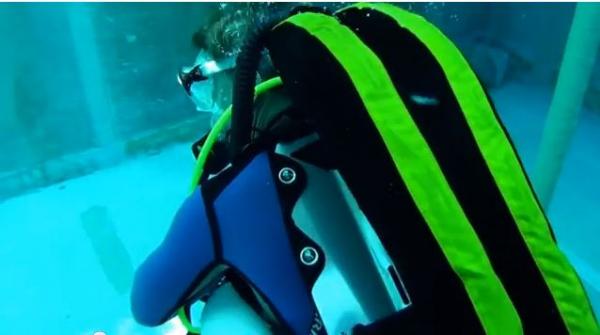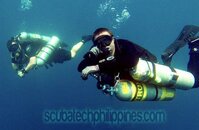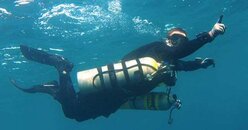victorzamora
Contributor
However, the reason why I don't think it's a critical disadvantage: It can be overcome with training/practice.
This, I think, is a crucial part of your argument that was under-emphasized. Your issues were due to your lack of practice/training in SM. At any point in any dive I can tell you exactly which reg I'm breathing off of, how much air is in the other tank, and about how much air is in the tank I'm breathing off of....especially in the overhead. So, your 4-6 second delay should drop dramatically due to not having to think about it....you just know. The other crucial factor is that my long hose is on a breakaway. If I'm wearing gloves, or it's cold and I've lost dexterity, I just yank on it and break my tiny little zipties. Actually, in an OOA situation, my practice is to tear it off....I don't even fiddle with the clip. It's the SAME time lapse as pulling from my mouth.
Also, as I've said, OOA in training scenarios are VERY unrealistic. Nobody "randomly" goes OOA. Whether in SM or BM, you see it coming. In IndySM, even if you have an unnoticed critical failure at the worst possible moment, you should EASILY be able to switch to your other tank and then let your buddy know your issue. Typically, I'd recommend switching to air share at that point. That way, in good vis, open cave you can share the gas, and save your remaining onboard gas for emergency situations or tight passages. In BM, something catastrophic has happened and your buddy should be aware WELL before you ever signal OOA. No responsible OW diver should EVER be surprised by running OOA. No overhead diver should EVER be surprised by running OOA.
SDS: The only point I'll grant you is flexibility with surface supplied air. If you own your own surface supplied air station, and you dive it regularly on standard trips, and you have the need to switch to it quickly (like no SI), and you don't want to just use the typical surface supplied techniques, and you insist on maintaining the same rig through it all.....there is some benefit. For >99% of divers, this doesn't apply.
As for gearing up in the water, we've had this discussion before and I believe the difference in time to gear up to be VERY marginal. Both systems have to clip on neck clips (if applicable to particular diver), tail clips, neck bungee, and two LPI hoses. With IndySM, you also have to put a necklace on and then route a long hose.








